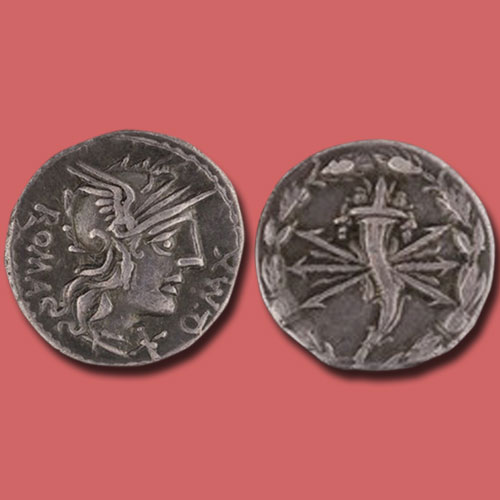Cornucopia on coins
2018-01-02 Tue
The Horn of Plenty or Cornucopia is a classical antiquity. It was a symbol of abundance and nourishment to the people of Rome. This ornament was the favourite concept for artist to illustrate on various arts, both sculptures and numismatics.Cornucopia appeared on coins as the representation of abundance, fecundity and happiness. The accessorized horn filled with fruits, enclosed with wreath, corn-ears and flowers is the insignia of the Triumvir Monetalis, denoting the abundance of all things. It was found on the coins issued by the powerful family like Aemilia, Annia, Carisia, Claudia, Fabia, Livineia, Mussida, Julia, etc of the Republic of Rome. It appeared on the denarius of Augustus, placed on the back of zodiac ‘Capricorn’.
The coinage of Roman Republic depicts Cornucopia in its reverse which is superimposed on thunderbolt. The above-shown denarius issued by Q.Fabius Maximus illustrates the same picture. Before Augustus, many/other important members of Roman Senate like Lepidus, Domitian, Hadrian also depicted the “Horn of plenty” on their coins which were issued during the Republic.
The legend of Cornucopia is associated with Amalthea, the nurse of Jupiter from which all the essentials issued. It also connects with the lore of Hercules, he tore it from the head of Archelaus and nymphs picked it up and converted it into Horn of plenty.
Cornucopia also found its place in the imperial coinage of Nero, Galba, Vitellius, Sabina, etc it continued until the age of Constantine. Later on, two cornucopias with caduceus between them were depicted on the coins of Drusus Junior.
Learn more about Roman Republic.
To know more about Roman Republic coinage click here.
Latest News
-
Panchala King Bhanumitra Copper Coin
2024-04-26 FriThe Panchala kingdom was ruled by the Mitra kings. The Mitra kings are known to issue coins and most...
-
Mahatma
2024-04-25 ThuIndia Post issued a commemorative postage stamp on #LalaHansraj, also known as Mahatma Hansraj for�...
-
Berar Mint of Muhammad Akbar
2024-04-25 ThuBerar was a kingdom located in the Deccan region, with Elichpur as its capital. It was one of the Su...
-
Janma Kalnayak of Bhagwan Mahavir
2024-04-24 WedOn 21st April 2024 which was the 2550th Janma Kalnyanak of Bhagwan Mahavir Swami, PM Modi unveile...
-
Gold Pagoda of Vijaynagar Empire King Deva Raya I
2024-04-10 WedKing Deva Raya I of the Vijayanagara Empire was a patron of Kannada literature and architecture. He ...

